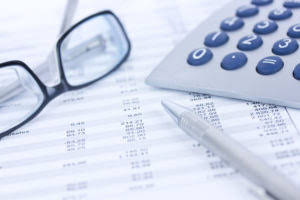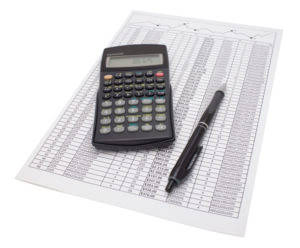Bad Debt Expense Definition
Content
- Accounts Receivable Aging Method
- The Allowance Method Based On Credit Sales Vs The Allowance Method Based On Accounts Receivable
- Accounting In The Headlines
- Direct Write Off Methoddefined With Examples
- Accounting For Direct Write
- The Sales Method Of Accounting For Byproducts Rather Than The Production Method

Remember that allowance for doubtful accounts is the holding account in which we placed the amount we estimated would go bad. This amount is just sitting there waiting until https://www.bookstime.com/ a specific accounts receivable balance is identified. Once we have a specific account, we debit Allowance for Doubtful Accounts to remove the amount from that account.
If an old debt is paid, the journal entry can simply be reversed and the payment posted to the customer’s account. The Direct Write-Off Method lets you charge bad debts directly to an expense such as the Allowance for Bad Debt account used in the journal entries above. By far the easiest write-off method, the direct write-off method should only be used for occasional bad debt write-offs. At this point, the $500 would be considered uncollectible, so Wayne needs to remove it from his accounts receivable account. If he does not write the bad debt off, it will stay as an open receivable item, artificially inflating his accounts receivable balance. No matter how carefully and thoroughly you screen your customers or manage your accounts receivable, you will end up with bad debt. Bad debt is the money that a customer or customers owe that you don’t believe you will be able to collect.
Accounts Receivable Aging Method
The direct write-off method does not comply with the generally accepted accounting principles , according to the Houston Chronicle. In the direct write-off method example above, what happens if the client ends up paying later on? Accounting Accounting software helps manage payable and receivable accounts, general ledgers, payroll and other accounting activities. The estimated amount is debited from the Bad Debts Expense and credited to an Allowance for Doubtful Accounts to maintain balance. Let’s try and make accounts receivable more relevant or understandable using an actual company.

Using the direct write-off method is an effective way for your business to recognize any bad debt. Bad debt refers to debt that customers owe for a good or service but won’t be paying back. In other words, it’s money they need to pay for a sale or service that they won’t be paying and the company won’t be receiving. Using the direct write-off method can help your business easily manage bad debt if you rarely get uncollected payments. In this article, you’ll learn how to use the direct write-off method for your business and the potential advantages and disadvantages of a direct write-off.
The Allowance Method Based On Credit Sales Vs The Allowance Method Based On Accounts Receivable
Using the direct write off method, Beth would simply debit the bad debt expense account for $100 and credit the accounts receivable account for the same amount. This effectively removes the receivable and records the loss Beth incurred from the non-creditworthy customer. You then send them an invoice of $600 after finishing the cake. In this case, $600 would be a credit entry to your company’s revenue and a debit entry of $600 would be made to accounts receivable. After a few months of trying to collect on the $600 invoice, you come to the realization that you won’t be paid for your services.
You own a car auto shop and install a new engine in a customer’s car for $3,000. The analysis method is more complex and time-consuming because it requires that an aging schedule be prepared before determining the adjusting entry amount. The aging of accounts receivable applies percentages to past due accounts to estimate the balance of the allowance for doubtful accounts account. The amount of the adjusting entry is the amount necessary to bring the allowance account to its estimated balance. Although the analysis method is more time-consuming, it is usually more accurate in estimating the uncollectible amounts.
It also records the accounts receivables on the balance sheet and an estimated amount of cash to be collected. We have to figure out how much we think we’re not going to get and reduce our accounts receivables accordingly by recording a bad debt expense.

Using the direct write-off method, your business reports the full amount of what customers owe when a credit sale is made. But if your company were to have uncollectible accounts receivable, the amount in accounts receivable would be too high. A company must use either the allowance method or the direct write-off method. Companies can use the percentage of sales method for quarterly reporting and the aging of receivables method for annual reporting. Because we identified the wrong account as uncollectible, we would also need to restore the balance in the allowance account. If the customer paid the bill on September 17, we would reverse the entry from April 7 and then record the payment of the receivable. However, from an accounting perspective, these uncollectible receivables are not allowed to be continuing records as current assets in the entity’s financial statements.
Accounting In The Headlines
Some companies even get the assistance of debt collection agencies to collect due amounts from customers. Accounts receivable aged analysis is an important report prepared in this regard that shows the amounts outstanding from each customer and for how long they have been outstanding. This will indicate any breaches of credit terms if there are any. The direct write off method allows a business to record bad debt expense only when the company is confident that the debt is unrecoverable. The account is removed from the accounts receivable balance and bad debt expense is increased. If you consistently have uncollectible accounts, use the allowance method for writing off bad debt, as it follows GAAP rules while keeping financial statements accurate.
- The business is left out of pocket with “bad debt” to balance in the books.
- Assume Beth’s Bracelet shop sells handmade jewelry to the public.
- A company will debit bad debts expense and credit this allowance account.
- For example, revenue may be recorded in one quarter and then expensed in another, which artificially inflates revenue in the first quarter and understates it in the second.
- Since a special journal’s column totals are posted to the general ledger at the end of each accounting period, the posting to J.
- Beginning bookkeepers in particular will appreciate the ease of the direct write-off method, since it only requires a single journal entry.
However, the direct write off method allows losses to be recorded in different periods from the original invoice dates. This means that reported losses could appear on the income statement against unrelated revenue, which distorts the balance sheet. It will report more revenue than might have actually been generated. This distortion goes against GAAP principles as the balance sheet will report more revenue than was generated. This is why GAAP doesn’t allow the direct write off method for financial reporting.
As you can see, writing off an account should only be done if you are completely certain that the full account is uncollectable. For instance, thematching principleisn’t really followed because the loss from this account is recognized several periods after the income was actually earned. Themateriality principlealso addresses when to use this method. For example, writing off a large and material account immediately might not be proper.
Direct Write Off Methoddefined With Examples
This is another variation of an allowance method so we will use Bad Debt Expense and Allowance for Doubtful Accounts. The aging method is a modified percentage of receivables method that looks at the age of the receivables. The longer a debt has been outstanding, the less likely it is that the balance will be collected. The aging method breaks down receivables based on the length of time each has been outstanding and applies a higher percentage to older debts.
The percentage that should be estimated as bad debts will be decided on past experience of nonpayment by customers. Under the direct write-off method, bad debts expense is first reported on a company’s income statement when a customer’s account is actually written off. Often this occurs many months after the credit sale was made and is done with an entry that debits Bad Debts Expense and credits Accounts Receivable. In contrast, the allowance method requires you to report bad debt expenses every fiscal year. For example, a company may recognize $1 million in sales in one period, and then wait three or four months to collect all of the related accounts receivable, before finally charging some bad debts off to expense.

Bad Debts Expense$ XYZAccounts Receivable$ XYZDirect write-off method does not use any allowance or reserve account. QuickBooks Online is the browser-based version of the popular desktop accounting application. It has extensive reporting functions, multi-user plans and an intuitive interface.
Accounting For Direct Write
Companies only have to pass two journal entries for the amount of the customer’s bad debt. Coca-Cola has several assets that are listed on its balance sheet. Let’s look at what is reported on Coca-Cola’s Form 10-K regarding its accounts receivable. Notice how we do not use bad debts expense in a write-off under the allowance method. A note receivable represents an amount to be received by a business. It is very similar to an account receivable, but the written promise to pay represents a stronger legal claim.
- When using the percentage of accounts receivable method, the amount calculated is the new balance in allowance for doubtful accounts.
- In essence, the bad debts expense account is debited and accounts receivable is credited.
- Using the direct write-off method, your business reports the full amount of what customers owe when a credit sale is made.
- Therefore, we will be using Allowance for Doubtful Accounts and Bad Debt Expense.
- The bad debt would not be recorded until the company determines the sale is actually uncollectible or when the adjusting entry is created for the allowance .
- If the business found after waiting for two months that the customer could only pay $2,000, the business would need to write off $3,000.
To collect on the amounts owed from customers, a business may make collection attempts including a succession of telephone calls and collection letters. Once all collection efforts have failed, the business must resort to writing off the customer’s account. Bad debt write-offs using the direct method are used by businesses that are not required to comply with generally accepted accounting principles, or GAAP. The accounts receivable at the end of the financial year would be most likely to be reported in the balance sheet at an amount that is greater than the amount that will actually be received from those receivables. Cash BasisCash Basis Accounting is an accounting method in which all the company’s revenues are accounted for only when there is an actual cash receipt, and all the expenses are recognized when they are paid. Small companies and individuals generally follow this accounting method.
After this time, you deem it uncollectible and record it as a bad debt. In this case, the accounts receivable account is reduced by $3,000 and is recorded as a bad debt expense. This means that when the loss is reported as an expense in the books, it’s being stacked up on the income statement against the revenue that’s unrelated to that project. Now total revenue isn’t correct in either the period the invoice was recorded or when the bad debt was expensed.
Because this is just another version of an allowance method, the accounts are Bad Debt Expense and Allowance for Doubtful Accounts. Bad debt is an expense that a business incurs once the repayment of credit previously extended to a customer is estimated to be uncollectible. The direct write-off method records the exact amount of uncollectible accounts as they are specifically identified. This usually occurs in an accounting period following the one in which sales related to it were reported. Accrual accounting is the most common method used by businesses. Define accrued expenses and revenues, explore the types of accrued expenses and revenues, and examine practical examples of these two concepts.
We must make sure to show that Joe Smith paid the amount he owed, not just the fact that the company received some cash. There are two different methods used to recognize bad debt expense. Using the direct write-off method, uncollectible accounts are written off directly to expense as they become uncollectible. The second method of writing-off accounts receivable is easier to report bad debt expenses. It directly writes off bad debts when they actually occur i.e. after several attempts of trying to recover the money. At the end of the accounting period, a bad debt expense is estimated and recorded in an adjusting entry. This a simple and the most convenient method of recording bad debts; however, it has a major drawback.
Generally accepted accounting principles require that companies use the allowance method when preparing financial statements. In the direct write-off method, a company will not use an allowance account to reduce its Accounts Receivable. THE DIRECT WRITE OFF METHOD. Under the direct write off method, when a small business determines an invoice is uncollectible they can debit the Bad Debts Expense account and credit Accounts Receivable immediately. This eliminates the revenue recorded as well as the outstanding balance owed to the business in the books. The direct write-off method is used to record uncollectible accounts by many small businesses that do not require audited financial statements.
In this case, we have a percentage for each outstanding period. Once you know how much from each time period, add them to get the total allowance balance. Allowance for Doubtful Accounts is where we store the nameless, faceless uncollectible amount. We know some accounts will go bad, but we do not have a name or face to attach to them. Once an uncollectible account has a name, we can reduce the nameless amount and decrease Accounts Receivable for the specific customer who is not going to pay. The direct write-off method allows a business to record Bad Debt Expense only when a specific account has been deemed uncollectible.
No provisions or reporting of provisions are required in this method. Financial StatementsFinancial statements are written reports prepared by a company’s management to present the company’s financial affairs over a given period . An example of this would be a business that has sales of $2 million and recognizes these in one accounting period. For a business using accounting software, this is done by generating a credit memo for each customer with an uncollectible debt.
The allowance method follows GAAP matching principle since we estimate uncollectible accounts at the end of the year. We use this estimate to record Bad Debt Expense and to setup a reserve account called Allowance for Doubtful Accounts based on previous experience with past due accounts. We can calculate this estimates based on Sales for the year or based on Accounts Receivable balance at the time of the estimate . The direct write off method is one of two methods to account for bad debts in bookkeeping. It’s also important to note that the direct write-off method violates the matching principle, which states that expenses should be reported during the period in which they were incurred.



